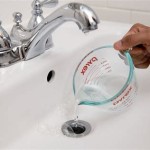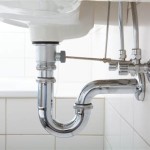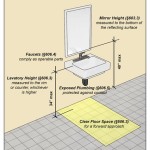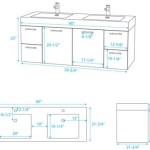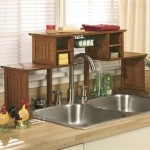Undermount Stainless Steel Double Sink: A Detailed Examination
Undermount stainless steel double sinks have become a popular choice for modern kitchens, offering a combination of functionality, durability, and aesthetic appeal. This article will delve into the various aspects of this type of sink, covering materials, installation, advantages, disadvantages, and key considerations for selecting the right model for a specific kitchen design and lifestyle.
The foundational element of an undermount stainless steel double sink is, naturally, its material. Stainless steel is a ferrous alloy, primarily composed of iron, chromium, and nickel, with trace amounts of other elements to enhance its properties. The chromium content is crucial, as it provides a passive layer of chromium oxide on the surface of the steel, protecting it from corrosion and rust. This self-healing layer is what makes stainless steel so resistant to staining and degradation in a wet environment. The nickel content contributes to the alloy's ductility, weldability, and further enhances its corrosion resistance.
The gauge of stainless steel is a critical factor in determining the sink's durability and resistance to dents and scratches. Gauge refers to the thickness of the steel; a lower gauge number indicates thicker steel. Typically, kitchen sinks are made from 16-gauge to 22-gauge stainless steel. A 16-gauge sink is significantly thicker and more robust than a 22-gauge sink. While a thicker gauge sink will generally cost more, the added durability and resistance to damage are often worth the investment, particularly for busy kitchens. Thinner gauge sinks are prone to denting from heavy pots and pans and can also produce more noise during use.
The term "double sink" refers to a sink basin that is divided into two separate compartments. These compartments can be of equal size, or one compartment can be larger than the other. This configuration provides versatility for various kitchen tasks. One compartment can be used for washing dishes, while the other can be used for rinsing or drying. This separation minimizes cross-contamination and streamlines the dishwashing process. Alternatively, one side can be used for food preparation, such as washing vegetables or thawing meat, while the other side remains available for other tasks. The size and depth of each compartment should be considered based on the user's specific needs and the types of items typically washed in the sink.
Advantages of an Undermount Installation
One of the primary advantages of an undermount sink is its seamless integration with the countertop. Unlike drop-in or top-mount sinks, which have a visible rim that sits on top of the countertop, an undermount sink is installed beneath the countertop. This creates a smooth, uninterrupted transition from the countertop surface into the sink basin. This clean, modern aesthetic is highly desirable for contemporary kitchen designs. The lack of a visible rim also simplifies cleaning, as there are no edges or crevices where food particles and debris can accumulate. Wiping crumbs and liquids directly from the countertop into the sink is effortless.
The undermount installation also maximizes usable countertop space. Because the sink is mounted underneath, the entire countertop surface is available for food preparation and other tasks. This is particularly beneficial in smaller kitchens where counter space is limited. The clean lines and uncluttered appearance of an undermount sink can also make a kitchen feel more spacious and organized. The uniform surface is not only aesthetically pleasing but also contributes to a more hygienic environment by reducing areas where bacteria can thrive.
Furthermore, undermount sinks offer greater flexibility in countertop material selection. They are compatible with solid surface countertops such as granite, quartz, and marble, which are known for their durability and aesthetic appeal. The weight of the sink is supported by the countertop, rather than the cabinet below, which requires a robust countertop material and proper installation techniques.
Disadvantages of Stainless Steel Double Sinks
While stainless steel is a durable and corrosion-resistant material, it is not impervious to scratches. Over time, the surface of a stainless steel sink can develop scratches from abrasive cleaning products, metal utensils, and everyday use. While these scratches are generally superficial and do not affect the sink's functionality, they can detract from its appearance. Using non-abrasive cleaning products and avoiding the use of harsh scouring pads can help to minimize scratching.
Another potential disadvantage of stainless steel sinks is their tendency to produce noise during use. The sound of water running into the sink or dishes clanging against the metal can be amplified by the thin stainless steel material. This noise can be particularly noticeable in kitchens with open floor plans. However, many manufacturers address this issue by applying sound-deadening pads to the underside of the sink. These pads help to absorb vibrations and reduce noise levels. When selecting a stainless steel sink, it is advisable to choose a model with sound-deadening features to minimize noise pollution.
Stainless steel, while resistant to staining, can be susceptible to water spots and discoloration if not properly maintained. Hard water, in particular, can leave mineral deposits on the surface of the sink, creating a cloudy or spotted appearance. Regular cleaning with a mild detergent and water, followed by drying with a soft cloth, can help to prevent water spots and maintain the sink's shine. In areas with hard water, a water softener may be necessary to prevent mineral buildup.
Key Considerations for Selection and Installation
Choosing the right size and configuration of an undermount stainless steel double sink is crucial for optimizing its functionality in a specific kitchen. The dimensions of the sink should be proportionate to the size of the kitchen and the amount of available counter space. A larger sink may be desirable for families who frequently cook large meals, while a smaller sink may be sufficient for individuals or couples who eat out more often. The depth of the sink basins should also be considered, as deeper sinks can accommodate larger pots and pans. The ratio of the basin sizes is important as well. Consider if two similarly sized basins are preferable, or a larger primary basin and a smaller secondary basin for food prep or disposal.
The quality of the stainless steel is another important factor to consider. As previously mentioned, the gauge of the steel affects its durability and resistance to dents. The grade of the stainless steel also matters. Grade 304 stainless steel is a common choice for kitchen sinks due to its excellent corrosion resistance and ease of maintenance. It contains approximately 18% chromium and 8% nickel, providing a high level of protection against rust and staining. Lower grades of stainless steel may be more prone to corrosion and discoloration.
Proper installation is essential for ensuring the longevity and functionality of an undermount stainless steel double sink. The sink should be securely attached to the underside of the countertop using appropriate mounting hardware and adhesive. The countertop material must be strong enough to support the weight of the sink and its contents. It is generally advisable to hire a professional installer to ensure that the sink is properly installed and that the countertop is adequately supported. Incorrect installation can lead to leaks, damage to the countertop, and premature failure of the sink.
Drain placement is yet another subtle, but vital, point to consider. While most double sinks have the drain centered in each basin, some models offer a rear drain placement. This provides more usable space in the bottom of the sink and allows for easier maneuvering of dishes and cookware. Furthermore, the offset drain can improve water drainage efficiency.
Finally, consider the accessories that can enhance the functionality of the sink. These may include sink grids, cutting boards, colanders, and rinse baskets. Sink grids protect the bottom of the sink from scratches and dents and allow water to drain freely. Cutting boards and colanders can be placed over the sink to provide additional workspace. Rinse baskets are useful for washing vegetables and fruits. Selecting accessories that are specifically designed for the sink model can improve its versatility and convenience.

Nobel U 03 Sus 304 Stainless Steel Double Equal Bowl Undermount Kitchen Sink In 790mm Syh Bathroom Studio

Vellamo Classic Double Bowl Undermount Stainless Steel Kitchen Sink Waste Kit 780 X 460mm Tap Warehouse

Blanco Quatrus Double Bowls Stainless Steel Undermount Kitchen Sink Big Bowl Right Uniqool

Monic U 813 Stainless Steel Kitchen Sink Undermount Double Bowl

Teka Arq 2b 840 Undermount Stainless Steel Kitchen Sink

Blanco Quatrus Double Bowls 400 Iu Stainless Steel Undermount Kitchen Sink Uniqool

Stainless Steel Double Bowl Undermount Kitchen Sink Singapore U

Deep Stainless Steel Double Bowl Undermount Kitchen Singapore U

Premium Stainless Steel Double Bowl Kitchen Sink Kraus Usa

Blanco Quatrus Double Bowls 400 Iu Stainless Steel Undermount Kitchen Sink
